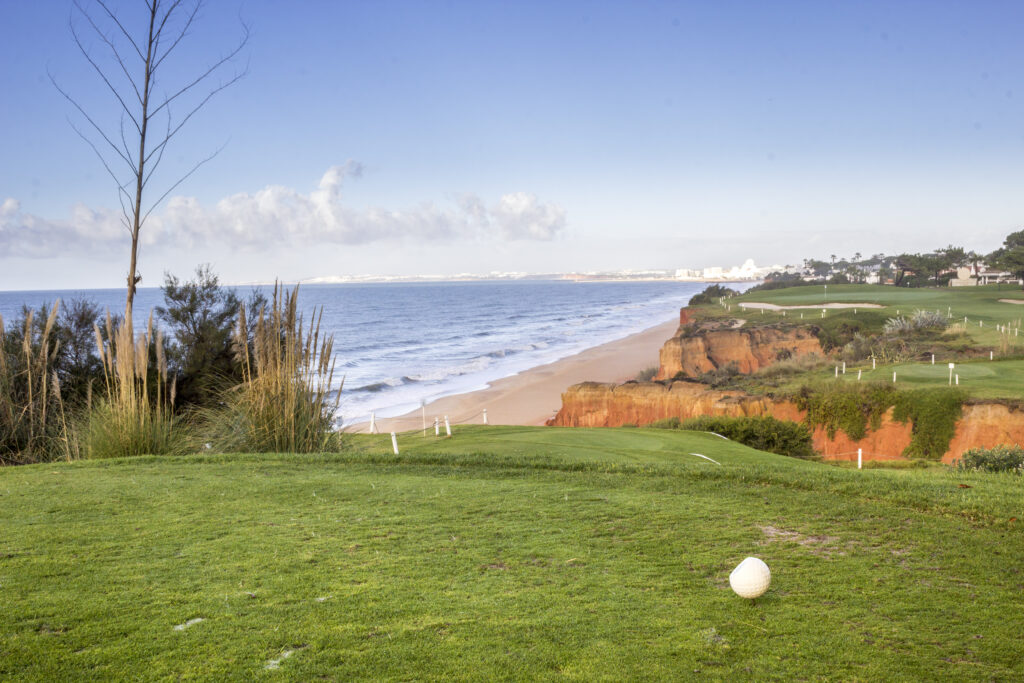Best Things to do in the Algarve, Portugal
Along the southern shores of Portugal, stretching from the most southwesterly point in Europe to the Spanish border, are the beautiful sun-kissed shores of the Algarve.
The area is unspoiled, and even after decades of tourism it has retained a traditional feel. On any given day you can follow in the footsteps of great maritime explorers searching for new worlds, watch weather-worn fishermen hauling in their catch of the day or wander back streets of Faro and Tavira admiring Azulejo tiled houses.
For the adventurous, there are many exciting things to do in Algarve too, from participating in water activities such as kayaking, diving and paddleboarding to hiking, mountain biking and taking boat trips to see dolphins in the wild.
Bustling markets sell fresh produce, and hand-made ceramic shops can be found on the fringes of many Algarvian towns. Soft sandy beaches, flanked by golden cliffs stretch the length of the coastline, and waterfront restaurants tempt you to try delicious local cuisine.
Whether you’re seeking a peaceful family holiday centered around fun at the beach, an activity-packed long weekend, or you’re travelling solo and want to delve into the fascinating culture of Portugal, the Algarve will surprise and delight you as it fulfils your bucket list.
Read our list of top sights in the Algarve and things to do while in the region, then start planning your next trip!
Walk the Seven Hanging Valleys Trail


The Seven Hanging Valleys Trail west of Faro is one of the top things to do in the Algarve for outdoor adventurers, hikers, and nature lovers alike.
Beginning at Praia da Marinha and ending in Praia Vale de Centeanes or vice versa, the length of the trail is almost 12 kilometres, and it takes around four hours in total with stops en route.
What’s special about this walking trail? It’s one of the best places for Algarve sightseeing, taking in some of the most spectacular scenery in the region, with natural arches and caves, endemic flora and fauna along rugged coastal paths, lighthouses, and hidden coves where you can break for a refreshing swim or picnic.

The clifftop walk is easy to follow with signposts signalling trail points, and some highlights include Benagil Cave (which can be seen from above on this walk), the natural double arch just past Cão Raivoso and the beautiful rouge rock formations at Marinha Beach.
Don’t forget to pose for your Instagram picture at the bistro table at the starting point at Praia do Vale de Ceteanes, wear comfortable walking shoes, a hat, and hydrate a lot, as it can be very hot on the unsheltered trail, especially during the summer months.
Read More: Walking the Seven Hanging Valleys Trail
Visit the Benagil Caves

If you walk the Seven Hanging Valleys Trail, the Benagil Cave is partially visible from above, however, there’s no greater way to see this stunning feat of nature than via kayak, paddleboard, or on a dedicated boat trip from nearby Portimão (this is the tour I took), Albufeira, or Lagos.
The vast dome cave, one of the must-see Algarve attractions, is said to date back 20 million years. Within, you’ll find natural geological rock formations, a sandy beach lapped by crystalline turquoise waters and an open roof which allows the sun to highlight the beach below.
Small RIB speed boats can enter the cave, plus, en route you get to learn about attractions such as the Fort of Santa Caterina, and the Ferragudo Castle; and you may even be lucky enough to see dolphins frolicking in the sea.
Alternatively, if you prefer a more personal experience, it’s also possible to hire a kayak or paddleboard from nearby beaches. Arrive early in the morning before the crowds and glide into the caves for a unique, memorable experience.
Note: Swimming into the cave is not advised as tides can change quickly.
Book your Benagil tour here:
Visit Ponta da Piedade

One of the must visit Algarve attractions is Ponta da Piedade or ‘Piety Point’ near Lagos. The rugged cape offers incredible vistas along the coastline, and when the sunlight catches golden rocks and turquoise waters, it’s a truly breathtaking canvas.
The dramatic limestone headland with natural arches and rock formations is akin to a curated movie set. It’s peppered with grottos and pillars, perfect for photo opportunities.
If you’re staying in Lagos, Ponta da Piedade is easy to reach too, on foot, by car, boat tours, kayak, or while standing up on a paddleboard.


At the headland, you can wander around the lighthouse, stop for a snack in the restaurant or even browse gift stalls before descending the stairs to the small port nestled in the cove. Sheltered by cliffs, it’s the perfect spot to jump on a tour boat of the grottos. However, this area is not really suitable for swimming due to the heavy flow of boat traffic throughout the day.
Visiting Ponta da Piedade in spring or autumn, helps to avoid large crowds, but if you are planning to take a guided excursion, even during these months, it’s advisable to book in advance.
Read More: Visiting Portugal’s Ponta da Piedade, or book your tour below:
Hop on a Dolphin Watching Tour with a Marine Biologist

Want to learn more about dolphins? Book a dolphin-watching tour on a speedboat from Lagos with marine biologists on board!
This excursion, one of the most popular activities in Algarve, occupies just 1.5 hours of your time, and not only do you get to see these magnificent creatures in their natural habitat, but you’re also helping conservation efforts in the area too.
Hop aboard the boat and watch in awe as marine biologists gather data and observe dolphin behaviour along the Algarve coast.

As the friendly mammals dip in and out of the water, experts will explain the scientific data behind their discoveries, passing on their vast knowledge about this fascinating species to you.
This is one of the best things to do in the Algarve for families as the information and memories you glean from this excursion will stay with you for many years to come.
Book your dolphin watching tour below:
Relax on Incredible Algarve Beaches
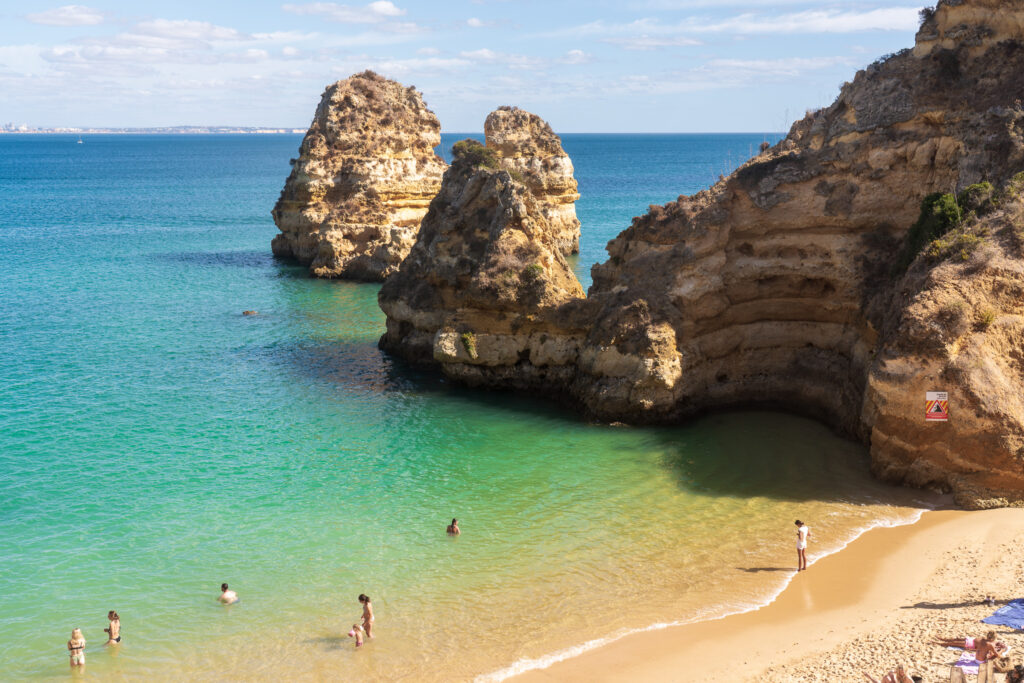
Some of the best places to visit in Algarve revolve around the region’s beautiful beaches. Most are clean, blanketed in soft sand and safe for swimming and water sports, with backdrops of golden cliffs, lush emerald landscapes and natural rock formations stretching far into the waters.
In the eastern Algarve, close to the Spanish border, Praia do Barril sits along a 1km sandbank and houses a huge ‘Anchor Cemetery’. Dozens of giant rusted anchors are embedded in the sand here – a memorial to the region’s tuna fishing heritage.
While near the village of Cacela Velha, a beach of the same name nestles along the edge of Rio Formosa Natural Park, a haven for rare bird species.

If you like to combine Algarvian history and beach fun, Praia Nova set beneath the Chapel of Nossa Senhora da Rocha, reached via a cave tunnel, ticks all the boxes. The tiny white chapel on the cliff promontory has a rich history to discover and provides excellent photo opportunities.
On the western Algarve, Praia de Dona Ana is one of the best beaches near Lagos, and secluded Praia do Beliche between Sagres and Cape St. Vincent was where the Portuguese caravels used to depart from as they sailed out to sea searching for new lands. Sit on the beach as waves lap the shore and imagine the scenes as cargo was loaded ready to depart on a huge adventure.
Read More: Most Beautiful Beaches of the Algarve
Follow in the Paths of Explorers

One highlight of any trip to the Algarve is to visit the end of Europe – the most southwesterly point of the continent, Cape St. Vincent. Once known as ‘the end of the world’ the cape was the last stop explorers would see as they ventured out into the turbulent and foreboding Atlantic Ocean.
As you stand near the cliff edge, as waves crash on the rocks below, you can imagine how the sailors felt leaving their homes and beloved country behind.


At the edge of the headland, the old lighthouse still stands, flashing its powerful beacon of light for up to 90 kilometres, deterring incoming vessels from sailing too close to the shore. During Portugal’s Golden Age of Discovery, Henry the Navigator planned many of his voyages from here in a building known as a School for Navigators.
Before you depart, pop inside the warm café and gift shop on-site for a cup of tea and cake, before continuing your own exploration to nearby Praia do Beliche and Sagres Fortress. Alternatively, save this spot for the end of the day and you’ll be rewarded with stunning sunset scenes.
Related Reading: Visiting the Algarve in Winter
See the Azulejo Tiled Houses in Tavira

Tavira is possibly one of the most underrated towns on the Algarve. Many tourists bypass the historic town close to the Spanish border in favour of more well-known towns like Albufeira or the capital, Faro.
However, Tavira encompasses all of the Algarve’s rich history in one place. With the Gilão River flowing through the centre, the coastal town is a mix of Portuguese and Moorish influences.

Wander along cobbled alleyways to see houses decorated with beautiful Azulejo tiles. These tiles date as far back as the 13th century when the Moors were in Portugal, as the word ‘Azulejo’ translates to ‘small polished or shiny stone’ in Arabic. The ceramic tiles, comprised of myriad geometric shapes come in muted tones – colours of land and sea in ochres, greens, blues, and whites.
While spending time in Tavira, visit the Moorish castle, the Renaissance-style Igreja da Misericórdia – a 16th-century church with reliefs and stop for lunch by the water’s edge before taking the ferry to spend the rest of the day on the nearby island beach.
Be an Eco-Tourist at Ria Formosa Natural Park

Encompassing 18,000 hectares and protected by peninsulas and barrier islands, Rio Formosa is home to some of the world’s rarest bird and marine species. This picturesque ocean lagoon surrounded by islands is located in the eastern Algarve near Tavira and is easy to reach from several locations.
The park is home to over 20,000 birds during the winter migration period including the Purple Swamphen and flamingos. The Portuguese Water Dog, chameleons and one of the world’s largest populations of seahorses also reside here.
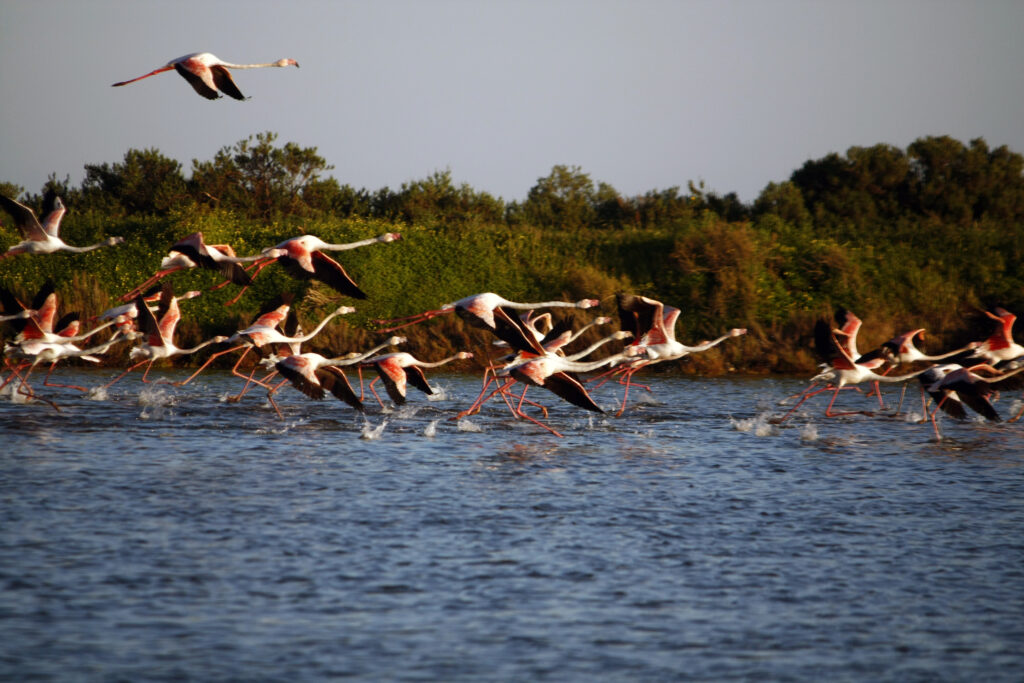
Enjoy an informative guided walk, hire a bike to navigate the area, take a boat trip or even kayak through the wetland areas and be at one with nature for a day of your stay.
Book your tour of the Ria Formosa Natural Park here:
Explore the Old Town of Lagos

Some of the best Algarve Portugal things to do can be discovered in the town of Lagos. With several beautiful beaches and scenic landmarks such as Ponta da Piedade within walking distance, the town attracts visitors from all around the world.
The historic centre of the old town is a labyrinth of narrow streets punctuated by whitewashed houses and there are still monuments dedicated to the darkest period of Lagos’ history when it was home to a large slave market.
Head to Igreja de Santo Antonio – a Portuguese National Monument, easily recognisable by its dual bell towers, or enjoy one of the best Algarve indoor activities for families.
Centro Cienca Viva de Lagos is a science and technology museum set inside a manor house in Lagos Old Town. With multiple interactive exhibits dedicated to scientific breakthroughs and the Age of Discovery, it’s a fun, educational day for all ages and the ideal place to visit on a cloudy day.

En route to Lagos marina to join a boat excursion, stop off at Avenida Municipal Market, one of the finest fresh produce markets in the Algarve. There are three floors dedicated to seafood, fruit and vegetables, and friendly stallholders will even give you recipes to try out at home.
On the third floor, a restaurant overlooks the sea and marina where you can enjoy authentic fare in a bustling environment with locals. The market is open Monday-Saturday from 7am – 2pm.
Learn to Surf near Sagres

One of the top beaches in the Algarve for surfing is Praia do Amado near Sagres, also home to Algarve Surf School. The company (they claim to be Portugal’s most popular surf school) offers private and group lessons for all levels of expertise.
They will collect you from a central pick-up point in Sagres and transport you to the beach to change into your wetsuit and collect your surfboard.
Book a Surf Camp Week package and get surf lessons with yoga included or join the staff and other surf enthusiasts at New Year for a huge celebration staying at their hostel and partake in a fun, 5-day surf course.
The great thing about surfing in the Algarve is that the water is usually still warm from spring through to autumn and the sea is so impossibly clear that you never have to worry about what lies beneath!
If staying closer to Lagos or Albufeira, perhaps check out the below surf schools instead:
Listen to Fado Music in Faro

If you’re seeking things to do around Faro, pop a Fado musical experience on your holiday itinerary.
Dating back to the early 1800s, Portuguese Fado music derives from capital, Lisbon. The cultural pastime involves a combination of singing and Portuguese guitar playing in intimate surroundings.
The songs are often melancholy, telling tales of seafaring people, longing and challenges faced in the everyday. Although it may sound a little depressing, the tunes and lyrics easily captivate an audience, and in the right surroundings, such as inside a traditional restaurant or bar, the experience can be completely mesmerising.
When in Faro, you can listen to Fado music at Restaurante Centenario. This delightful, cavern-style eatery with archways and old photographs on the walls is the perfect place to enjoy authentic Algarvian cuisine and watch a performance.
In 2011, Fado became a stalwart on the UNESCO Intangible Cultural Heritage List, making it one of the top things to see in the Algarve during your stay.
Hiking in Monchique Mountains

Tucked away between verdant mountains, around 30 minutes’ drive north of Portimão lies the hilltop town of Monchique. The town is famous for its thermal springs, Caldas de Monchique, which have existed since Roman times, and healing Monchique mineral water is served in restaurants and hotels throughout the area.
Set out on the trail to Foia, the Algarve’s highest peak, standing at 902 metres above sea level. The route is suited to more experienced hikers, as it covers around six kilometres each way, but it’s one of the best places to go in Algarve for views. There’s a snack bar and craft shop at the summit too, so you can stop for a drink or browse before beginning the scenic trek back down.
If you’re just starting out and prefer an easier, relatively flat hike, the Rota nas Caldas de Monchique takes around 1.5 hours, traversing lush landscapes, forests, and rivers with excellent vistas of the countryside.
San Lorenzo is a stunning course, flanked by pine forests and lagoons near Ria Formosa Nature Reserve in the Algarve. Fifteen of the 18 holes are played waterside, allowing for birdwatching and spectacular views as you navigate the fairways.
Another course not to be missed is at Quinta do Lago. The course has hosted the European Open many times and the fast par-3 greens make it one of the best to play on the Algarve.
The glamorous marina town of Vilamoura in central Algarve is also synonymous with golf. The Portugal Masters is played here annually and the course itself was designed by the legendary Arnold Palmer. It can be tough to play, but it’s definitely one you won’t want to miss!
Wander through the Fishing Village of Ferragudo

Ferragudo epitomizes the Algarve of old and is one of the top places to see in the Algarve. The quaint fishing village sits at the entrance of River Arade, close to golden sandy beaches and the buzzing city of Portimão.
Whitewashed houses trimmed with pastel colours tumble down the hillside towards the river, where wooden boats bob up and down on the water.
Wander along cobbled streets, until you reach Igreja da Nossa Senhora – Ferraguda’s main church with its Baroque exterior and rococo altarpieces. Although the church is impressive, the main highlight is the garden, set in the shade boasting views across the estuary, out to sea and towards neighbouring Portimão.

Ferragudo’s harbour area is famous for its seafood restaurants, and higher up in the town square, Praça Rainha Dona Leonor, there are cafes and eateries where you can sample typical local dishes.
There are beautiful beaches nearby too, Praia Grande being the most popular, where you can watch fishermen mending their nets and painting row boats. From here it’s easy to walk to the impressive Castelo de São João de Arade, built around the 1500s to prevent invaders from entering the town.
Planning to spend longer than a day in Ferragudo? Jump on a boat and head to the historic town of Silves along the river or to the nearby sea caves of Benagil for some exceptional photo opportunities.
Quad Biking in the Algarvian Countryside
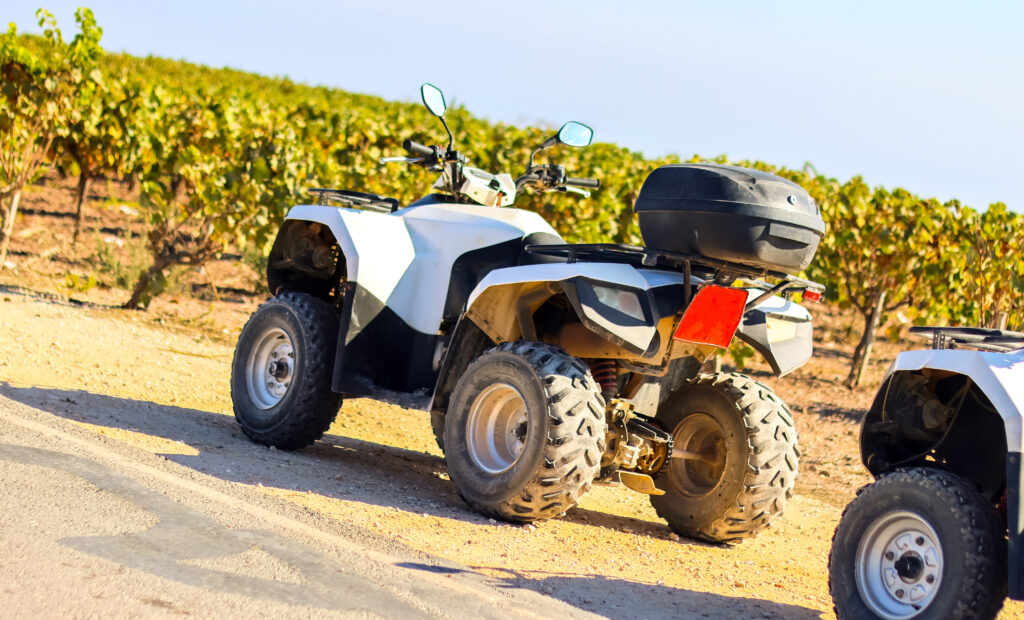
Enjoy a fun 1.5 or three-hour guided quad bike tour and see the Algarve countryside from a different perspective as you navigate orchard-strewn pathways, well-worn dirt tracks, hilltops, and natural landscapes.
The quad bike tours depart from several locations in the Algarve, making it convenient if you don’t have a hire car and it’s an adrenaline-packed experience for groups of friends or families to enjoy.
If you don’t feel confident driving a quad bike or don’t hold a driver’s license, no problem. On some tours, it’s possible to ride tandem and simply film the journey on a GoPro or take pictures of the scenery along the route.
Book your quad bike tour below:
Spend Time at the Medieval Festival in Silves
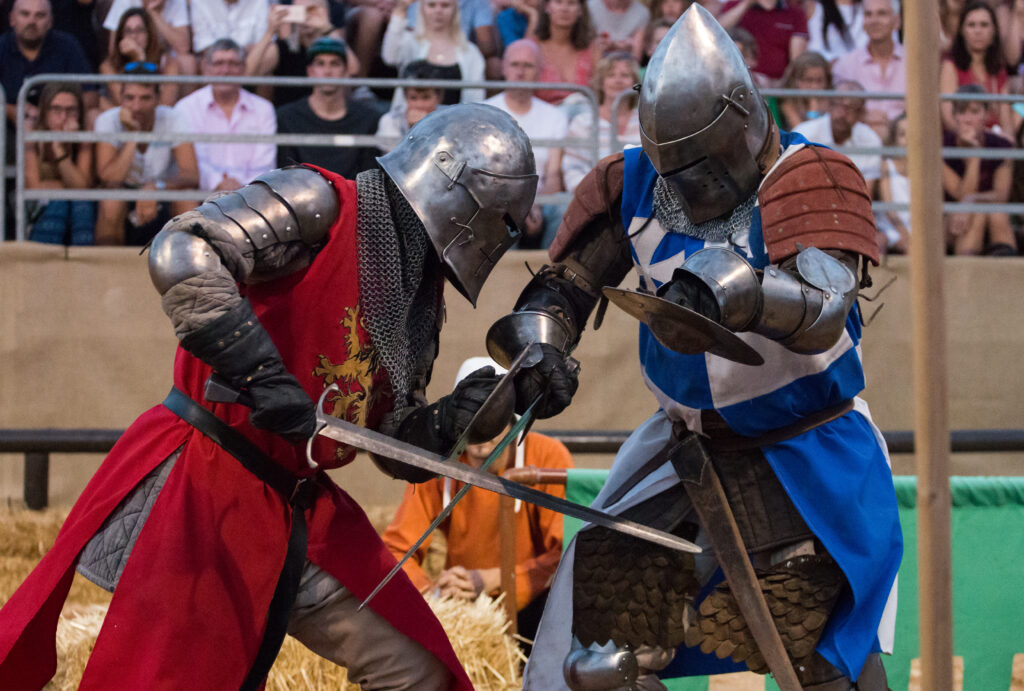
Head for the charming town of Silves in mid-August, where a fun medieval festival takes place every year and lasts for around a week.
Step back in time at Silves Castle, as cobbled streets are lined with vendors selling everything from artisan bread and pastries to handicrafts, bags, and Ali Baba style slippers.

All festival participants are dressed in full medieval costume, there are Moroccan tea tents, straw covers the pavements, and you may even see the odd rooster wandering around as you browse.
During the event you can use the local currency known as the Xilb and enjoy live music, fire eaters and belly dancing performances. This festival continues long into the evenings, so get completely into the spirit of the event and dress up in costume yourself!
Explore Roman Ruins

Interested in learning more about the Algarve’s maritime history and culture?
Among the region’s unmissable archaeological sites are the Roman Ruins of Milreu near Faro, and the Carro da Villa near Vilamoura. Transporting visitors back 2,000 years, these ancient villas showcase Algarve life throughout the ages.
The well-preserved outdoor ruins of these Roman villas display remnants of intricate mosaics, private baths, factories, and ancient trading posts. While the accompanying small museum displays hundreds of artefacts excavated from the sites including earthenware pots, bracelets, rings, and brooches.
Sample Aguardente de Medronho

Most visitors to Portugal believe that the local drink is port, and although in the north this is true, in the south, along the Algarve, Aguardente de Medronho is the local drink of choice.
The Medronho fruit grows on trees, it’s small, orangey red in colour and spikey to the touch. It’s found growing in southern Portugal, and well-meaning locals will inform you that it heals all ailments from stomach cramps to respiratory conditions.
The drink is fermented and distilled, occasionally infused with other fruits, however, it’s strong, containing around 40% alcohol if purchased from the supermarket. Many bars and cafes, especially in inland mountain towns will sell it by the shot glass for less than a Euro.
The homemade variety is much more potent, so if a local offers you a glass of Aguardente de Medronho, make sure you aren’t driving and keep the rest of the day free, because you’ll probably need it!
I hope our list of fun things to do in the Algarve has offered plenty of inspiration to encourage you to book your next vacation.
Whether you decide to delve deep into the history and traditions of the Algarve, explore the region’s natural beauty or enjoy a thrilling, activity-led road trip, this delightful region of southern Portugal has something for everyone.




